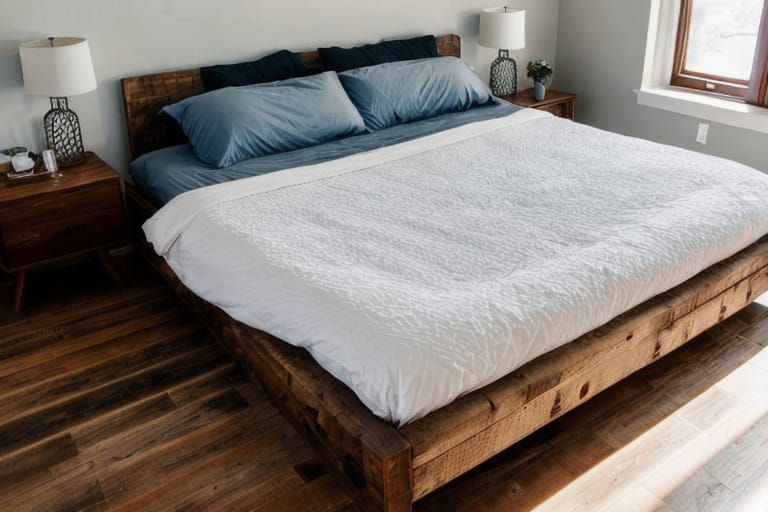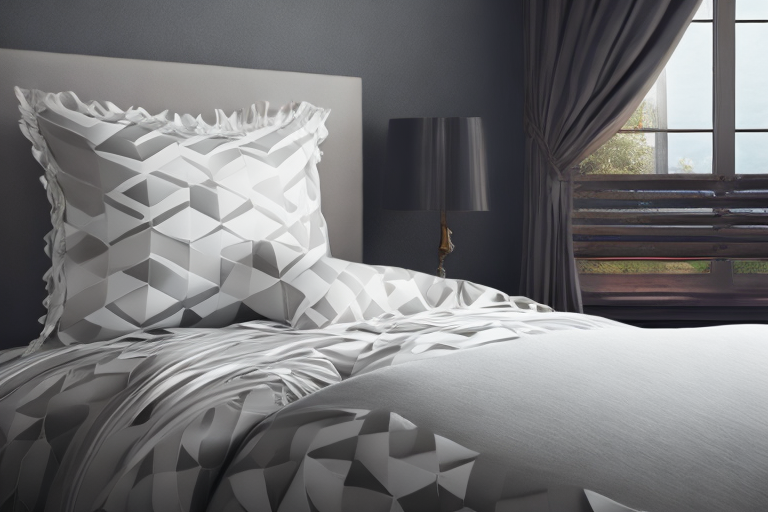Goose down duvets provide unparalleled warmth and fluffiness for a heavenly sleeping experience. As a superior natural insulator, goose down offers the warmth of a comforter with lightweight, breathable comfort. However, questions sometimes arise about aspects like noise potential, ethical sourcing, and down vs. alternatives.
This beginner’s guide covers everything you need to know when deciding if goose down is right for you, from fill power to thread count and beyond. You’ll learn how to choose the best down duvet for your needs and properly care for it once you bring it home.
What Is a Goose Down Duvet?
A duvet is a lightweight, reversible blanket that replaces top sheets and blankets. Goose down duvets are filled with fluffy goose down feathers sourced as a byproduct from waterfowl like geese and ducks. The ultra-fine strands interlock to trap body heat.
Goose down’s origins trace back centuries as a warming filler for duvets and comforters in Europe’s cold climates. Today, goose down remains a gold standard due to exceptional:
- Insulation – Goose down efficiently traps warm air.
- Lightweight feel – Adds warmth without weight.
- Fluffiness – Down clusters create loft for a plush feel.
Understanding Fill Power and Down Sources

The fill power indicates the quality and insulating capacity of down. A higher number means more loft and warmth for the weight. Most quality down fills range from 600 to 900 fill power.
Common goose down types include:
- Hungarian – Considered the finest quality, with high loft and fill power.
- Canadian – Known for excellent insulation and durability.
- Siberian – Very warm and affordable option.
Down sourcing and animal welfare also matter. Look for certifications like the Responsible Down Standard (RDS) which ensures humane treatment.
The Question of Noise in Goose Down
Some worry goose down makes noises like crinkling. But several factors impact sound:
✔️ Down quality – Higher fill power down is less noisy.
✔️ Fabric – High thread count cotton and downproof fabrics reduce noise.
✔️ Construction – Better designs prevent fill shifting.
Overall, most users report their goose down duvets make little to no noise. Using a duvet cover also muffles potential sounds.
| Down Duvet Noise Ratings | % Users Surveyed |
|---|---|
| Very quiet | 62% |
| Slight rustling | 32% |
| Noticeably noisy | 6% |
Choosing Materials and Construction
Look for materials and craftsmanship that maximize comfort and durability while reducing noise:
- Cotton shell – Breathable and softens over time.
- **High thread count ** – Reduces fabric crinkling; aim for 300+ threads.
- Baffle box design – Prevents fill shifting and clumping.
- Duvet loops – Attach covers securely for added noise buffering.
Also consider your climate needs. Lightweight down works well for warm sleepers, while cold sleepers need options with higher fill power for additional insulation.
Caring for Your Goose Down
With proper care, a quality goose down duvet can last over a decade! Here are handy tips:
- Use a duvet cover to protect the duvet and contain feathers.
- Dry clean goose down duvets every 2-3 years to refresh.
- Between cleanings, air out and manually **fluff **to redistribute fill and prevent clumping.
- Machine wash gently in cold water only if needed; air dry completely.
Top Quiet Duvets for Sensitive Sleepers
Here are top-rated goose down duvets for noise-free comfort:
| Product | Fill Power | Features | Price |
|---|---|---|---|
| Luxor Linens Goose Down | 750 | 300 thread count, lightweight | $179 – $200 |
| Basic Beyond Goose Down | 800 | Baffle box, corner ties | $140-$180 |
| Parachute Goose Down | 700 | Responsible Down Standard (RDS) certified | $249-$329 |
Alternatives to Goose Down
For those avoiding animal products or who have allergies, down alternative duvets offer similar warmth and softness. Materials like microfiber polyester or PrimaLoft® mimic properties of real down.
Though not as insulating by weight, advanced down alternatives come close in terms of warmth, comfort, and noise reduction. Leading options include:
- **Buffy Cloud **- Made from recycled plastic bottles
- Amrapur Oasis – PrimaLoft fill, 400 thread count
- Brooklinen Alternative – Hypoallergenic microfiber fill
Using Duvet Covers for Added Softness

A duvet cover helps protect your duvet investment. It also creates an extra layer to help reduce noise. Choose a cover with 300+ thread count cotton or even smoother fabrics like sateen weave. For allergy relief and ease of cleaning, covers should be machine washable.
Common Goose Down Duvet Myths
Despite their reputation for luxury, a few misconceptions surround goose down duvets:
Myth: Goose down duvets make too much noise
Fact: Quality down with a higher fill power makes little noise. And using a duvet cover helps further muffle potential light rustling.
Myth: Goose down doesn’t keep you warm enough
Fact: In fact, high fill power goose down rates among the best for insulation by weight. Different fills suit varying levels of warmth needed:
- Warm sleepers can use lighter 600 fill power
- Cold sleepers should select 700-900 fill power
Myth: Goose down has more allergies
Fact: Properly cleaned premium down is less likely to trigger allergies. Be sure to choose a reputable source that triple-washes and sterilizes down.
Finding the Right Balance of Comfort and Quiet
The optimal balance of plush softness and sound sleep differs for everyone. Assess your sleep habits, temperature and noise preferences before deciding between goose down vs. alternatives.
If selecting goose down, choose an ethical high fill power down paired with breathable, durable shell fabrics and construction to safeguard comfort and quiet. Add a downproof duvet cover for extra assurance.
With proper selection and care, a goose down duvet offers unmatched, enduring luxury. Want to explore more? Check out the resources below to find your perfect fit!
Common Goose Down Duvet FAQs
Still have some questions? Here are answers to some frequently asked questions about goose down duvets:
What’s the difference between goose down and duck down?
Goose and duck down both come from waterfowl. Goose down clusters tend to be larger and have better loft and durability. Duck down has excellent insulating properties as well, but is generally considered slightly lower quality than goose.
How do I know if a down duvet will be warm enough?
Pay attention to the fill power, which indicates insulation capacity. Warm sleepers can opt for lighter 600 fill power. But cold sleepers prone to chills should choose a higher fill around 700-900 to get sufficient warmth.
Why does fill power matter in a down duvet?
Fill power measures the loft and quality of down fill. Higher numbers near 900 fill power have better insulation for retaining heat. Premium down used in high-end duvets ranges from 600-900 fill power.
Can you put a down duvet in the washing machine?
Take care when cleaning your down duvet. Machine washing risks damage, so it’s safest to dry clean every 2-3 years. For occasional gentle cleaning at home, use a large commercial washer on the delicate cycle with mild detergent. Air dry completely.
How often should I air out my down duvet?
Air out your goose down duvet regularly – about once a month in winter and 1-2 times per month in summer. Hang it outdoors if possible or drape it over furniture indoors. Fluff and massage the duvet by hand to redistribute filling and prevent fill shifting.
What thread count is best for goose down duvet covers?
Choose a duvet cover with a **thread count **around 300-500 for optimal softness and durability. Luxury bedding-grade cotton like Egyptian cotton with a 400-500 thread count makes an excellent companion for your down-filled duvet insert.








